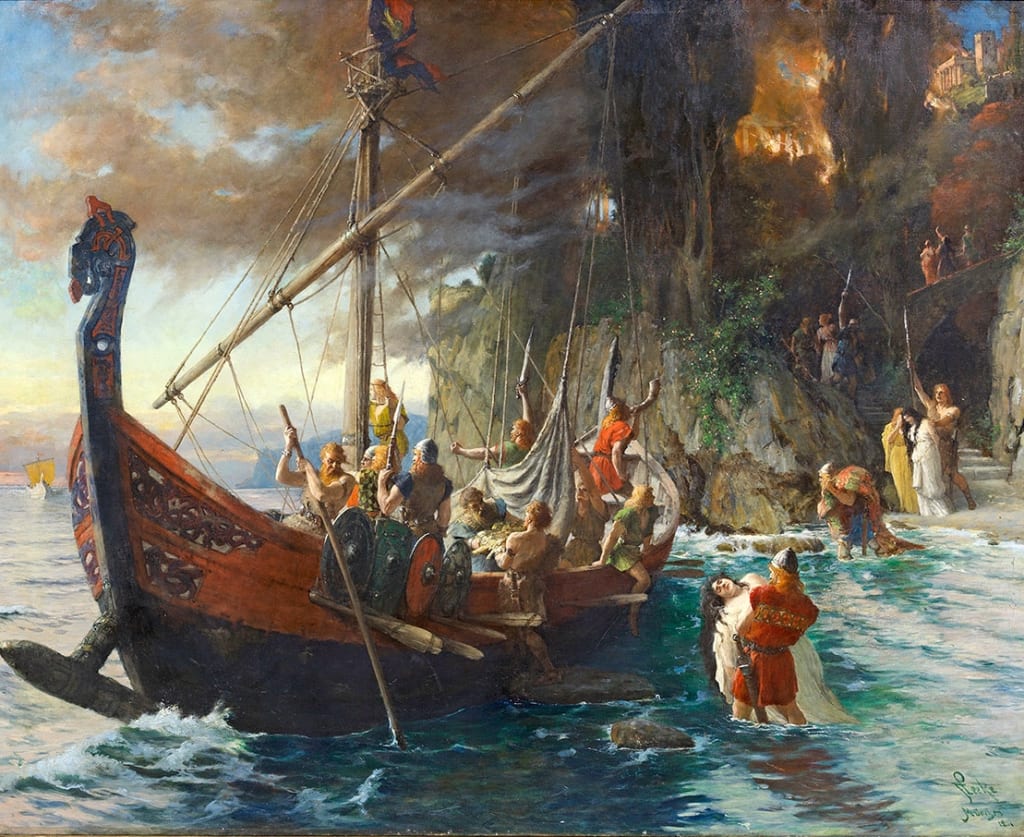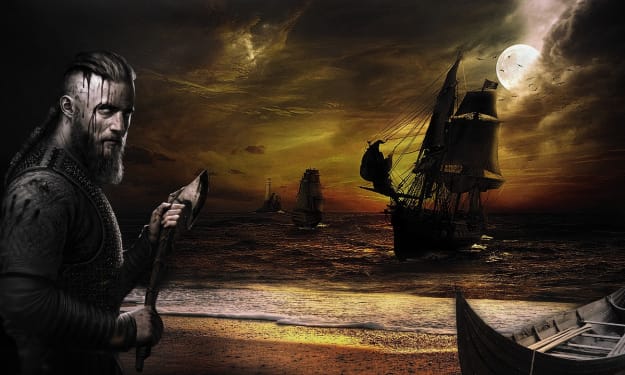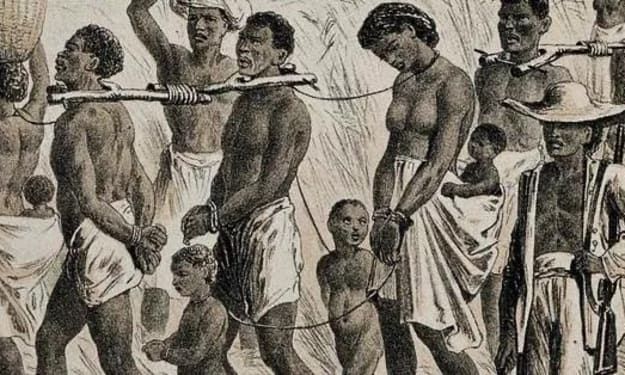Unveiling the Viking Chronicle: Pillagers, Merchandisers and Combatants
Unveiling the Viking Chronicle

The Viking Age, which lasted from the late 8th to the early 11th century, is a fascinating and transformative era in history. While it was previously known for the fierce activities of Scandinavian seafarers, recent archaeological and scientific discoveries have provided a more intricate understanding of Viking culture. Contrary to the simplistic depiction of them as mere plunderers, the Vikings were involved in a complex interplay of raiding, trading, and strategic diplomacy, which had a lasting impact on the trajectory of history.
The unforeseen emergence of Vikings along the coastal regions ranging from Scotland to the Caspian Sea has perpetually remained a perplexing enigma. Historically regarded as erratic raiders, recent archaeological discoveries cast doubt on this belief. Instead of mere pillagers, the Vikings emerge as shrewd strategists, meticulously orchestrating their expeditions to maximize their gains and leave an indelible psychological impression on their intended victims.
An exceptional archaeological find on Sarima Island, Estonia has led to a significant advancement in our knowledge of Viking timelines. The unearthing of two boat graves has astounded researchers, as they have uncovered more than 40 human skeletons, challenging existing beliefs and expectations. Through the use of advanced dating techniques, it has been determined that these remains are from a time period at least a century prior to the earliest documented Viking raids. This groundbreaking revelation has the potential to reshape our understanding of Viking history, indicating that their raids may have begun much earlier than previously thought.
The historical records clearly document the Viking raids, but the evidence from Russia presents a captivating account of Vikings participating not only in raiding but also in extensive trading ventures across the major rivers of Eastern Europe. The archaeological remains of trading hubs such as Truso and Novgorod serve as tangible proof of the Vikings' significant contribution in establishing trade networks that linked the Baltic and Caspian Seas. This multifaceted role of the Vikings, encompassing both raiding and trading, defies oversimplified stereotypes.
The transformation of Viking raids into large-scale invasions was heavily influenced by the political environment of the time. The weakening of Charlemagne's empire and internal disputes within Scandinavia created favorable circumstances for the Viking assaults. By utilizing quick and strategic hit-and-run tactics, the Vikings initially focused on coastal and riverside communities in Scotland and Ireland, gradually intensifying their attacks on England and the Frankish Empire.
The emergence of Viking kingdoms was greatly influenced by prominent leaders such as Rurik and Ailek, who played a pivotal role in establishing powerful domains in areas like Novgorod and Kiev. The remarkable military prowess of the Vikings resulted in the creation of the Varangian Guard, which served as the personal bodyguards of the Byzantine Emperor. This era witnessed the Vikings not only as raiders, but also as significant political forces that shaped the geopolitical map.
The arrival of the Great Heathen Army in England in 865 marked a significant turning point, unleashing a period of fear and oppression that endured for two decades. The Vikings swiftly captured York and expanded their dominion across the land. Yet, it was the strategic military reforms and the establishment of fortified towns by King Alfred of Wessex that effectively put a stop to their progress. The Danelaw, a Viking-controlled territory within England, vividly demonstrated the intricate cultural amalgamation resulting from the interactions between the Vikings and the English.
By venturing beyond Europe, the Vikings achieved remarkable accomplishments in exploration. Through their expeditions, which were supported by sagas and archaeological evidence, they demonstrated their expertise in trade and the establishment of temporary settlements in distant lands. By approximately 1000 AD, they had successfully reached Iceland, Greenland, and even North America. Their journeys were characterized by a blend of adventure, the search for resources, and an unwavering desire for discovery.
Contrary to popular belief, the Viking Age was not solely characterized by rampant violence. It encompassed a diverse range of activities including trade, exploration, and strategic negotiations. The Vikings, who were once notorious for their pillaging ways, underwent a transformation and emerged as leaders and merchants, leaving an indelible mark on the regions they came across. Their influence continues to shape the interconnected history and cultural legacy of present-day Scandinavia and the nations they interacted with.
As we unravel the Viking saga, we are immersed in a varied tapestry of a civilization that skillfully navigated through a turbulent era, shaping the trajectory of history with their distinct blend of aggression, trade, and discovery. The Viking Age emerges as a multifaceted epoch that transcends simplistic narratives, inviting us to delve into the intricate dynamics that characterized this extraordinary civilization.
About the Creator
Johnny Six
I'm a devoted stay-at-home mom, passionate about alternative education and homeschooling. My daughter is my focus, and together, we explore various hobbies,cooking, art, nature, reading, and music. https://helsprintsandthings.etsy.com
Enjoyed the story? Support the Creator.
Subscribe for free to receive all their stories in your feed. You could also pledge your support or give them a one-off tip, letting them know you appreciate their work.






Comments
There are no comments for this story
Be the first to respond and start the conversation.